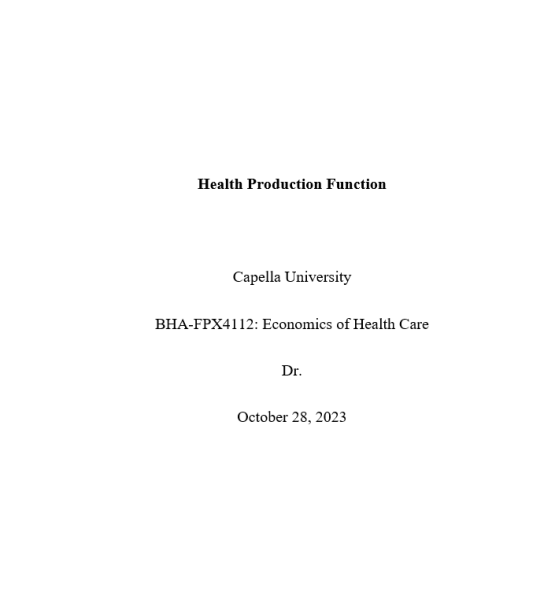
The Supply and Demand of Health Care
Capella University
BHA-FPX4112: Economics of Health Care
Dr. Christopher Miller
October 29, 2022
Availability:In Stock
The Supply and Demand of Health Care
The healthcare sector is unique since its impacts the lives of more people compared to other industries such as automobiles. The law of demand is similar in the health care sector and other markets such as automobiles. In this case, an increase in process reduces demand for services. However, consumers have an incentive to purchase more health care services due to incentives provided by insurance firms. The demand for health care services is also relatively inelastic, considering that patients purchase services at almost any rates when sick (Stadhoudersa et al., 2019). Thus, patients and their families may avoid spending on other products to access the medical care they need. Comparing the supply and demand of health services to scenarios in the automobile sector highlights unique differences between the health care and other sectors. This paper discusses determinants of demand and supply in the health care sector and compares with scenarios in the automobile industry. The discussion provides insights into the uniqueness of the health care industry, where demand for services is simultaneously an investment for everyone aiming to maintain a healthier and productive life.
Demand of Health Care Services with the Demand of an Automobile
The United States healthcare system is experiencing significant reforms triggered by an increasing demand for health services. A high population and the growing number of elderly patients with multiple chronic conditions explains changes in the industry (Adaskou et al., 2021). The challenges trigger uncertainties about the future of the American healthcare system. Nonetheless, health remains an investment for millions of people across the world. Everyone desires to remain healthy, hence the decision to make health a simultaneous investment. In this case, consumers in the health care sector may choose to spend more on their current health to achieve significant benefits in the future (Rodriguez et al., 2021). The demand for health care aligns with individual desire to remain productive and in good health (Adaskou et al., 2021). The various determinants of demand for health services include a patient’s income, accessibility of services, and health policies at local, state, and national levels. The common factors are cost and accessibility, which motivate individuals to engage primary care providers and specialists. Costs include expenses for therapies, medication, and medical procedures (Adaskou et al., 2021). Increase in cost of care triggers negative health-seeking behaviors, consequently lowering demand. More patients avoid the burden of paying more for primary, urgent, emergency care, and other essential services. In this case, patients are likely to skip appointments and other treatments that influence quality of care.
Reviews
There are no reviews yet.